Gifting has never been easier
Perfect if you're short on time or are unable to deliver your gift yourself. Enter your message and select when to send it.
DISPATCH IN 48 HOURS
Shop in-stock lighting for Thanksgiving
BLACK FRIDAY STARTS NOW
Get Member Price
200+ NEW ARRIVALS
Explore Our Collection
FREE SHIPPING ON ORDERS $200+
Shop Now
DISPATCH IN 48 HOURS
Shop in-stock lighting for Thanksgiving
BLACK FRIDAY STARTS NOW
Get Member Price
200+ NEW ARRIVALS
Explore Our Collection
FREE SHIPPING ON ORDERS $200+
Shop Now
Cart 0
Your cart is empty
Are there any tips for homeowners on how to repair rattan furniture that is damaged or older? The answer is yes. With a few tips and tools, you can renovate your furniture and make it look more contemporary.
Let's at Rowabi lighting explore the following tips to repair your rattan furniture through this article!

Furniture made of rattan is an appealing choice, however, even the best-made one can deteriorate or wear out over time. Moreover, a regular problem is that the rattan pieces on this furniture sometimes come untied from usage or bad handling.

You should repair rattan furniture to renew and increase its lifespan
You should know how to repair rattan wicker furniture to renew and increase its lifespan. There are some problems and signals to fix your pieces that you should keep in mind:
While rattan is known for its relatively high durability, over time, it can experience splitting and cracking, especially when subjected to the weight of objects. This is particularly common when rattan furniture is placed outdoors and exposed to harsh weather conditions and high humidity. Even a few cracked or broken rattan strands can significantly impact the overall structure of the furniture.
Due to its natural composition, fading is a common issue when it comes to rattan. This problem is primarily caused by exposure to sunlight and environmental factors. Fun fact, sun exposure is often utilized by craftsmen to intentionally change the color of rattan.
During production, encountering minor issues such as loose strands in the weaving or breakage after initial use is not uncommon. Therefore, it's essential to have some methods in place to address such occurrences effectively.
Be a part of our story. Discover the perfect decor that speaks to you. Free delivery between Dec 3 - 4 on orders $200+
45-Day Return
Free delivery between Dec 3 - 4 on orders $200+
45-Day Return
Free delivery between Dec 3 - 4 on orders $200+
45-Day Return
Free delivery between Dec 3 - 4 on orders $200+
45-Day Return
Free delivery between Dec 3 - 4 on orders $200+
45-Day Return
Free delivery between Dec 3 - 4 on orders $200+
45-Day Return
Depending on the specific issue, you may require different tools; however, there are several essential tools you should prepare in advance to expedite the process:
To maintain its appearance and quality, you need to repair rattan furniture regularly. Let’s check through these steps to maintain their entirely new look and feel.
How do you repair rattan furniture? The very first step is to thoroughly clean the rattan furniture. Dirt and dust can gather on the rattan's surface, making it difficult for the sticky substance to adhere. So, you need to clean away any small particles or soil with a soft-bristled brush. After that, let's clean the furniture with water and detergent.
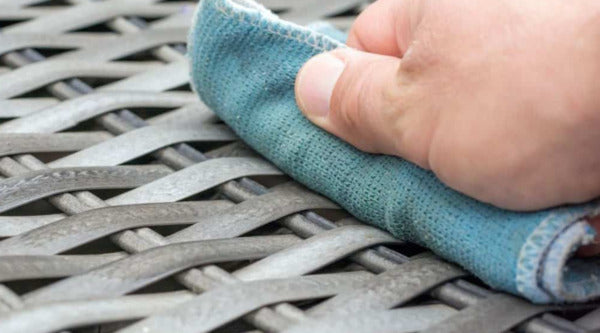
You need to clean away any small particles or soil
Then, you should wipe off the rattan furniture with a soft cloth after soaking it in a bucket of warm, soapy water. When wiping it clean, let's dry them out in the air thoroughly before proceeding to the next step.
This simple cleaning procedure will guarantee that the furnishings are prepared for maintenance.
The next step is to determine the damaged areas that require repair. In detail, you need to find any rattan strands that are loose or damaged, along with any holes and cracks in the weaving.

You have to determine the damaged areas that require repair
These are particularly common spots that deteriorate over time, especially if the furniture is used frequently. After you have pinpointed the damaged places, you will be more prepared to tackle what's needed to fix and repair the item to its original condition.
It is critical to cut damaged strands. It not only improves the overall beauty of the furniture, but it also helps avoid additional damage. One thing to remember is to capture the pattern before beginning the repair process. This will let you recreate the aesthetic as accurately as possible.
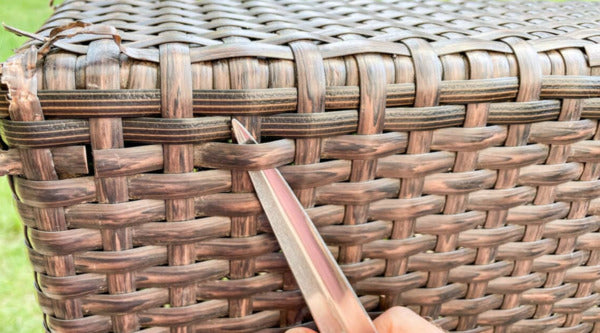
It is critical to cut damaged strands
When you start fixing damaged rattan strands, let's soak the rattan strips in water. This step is critical because it makes it simpler to do the mending procedure. It also assists in ensuring that the new rattan matches the previous weave.
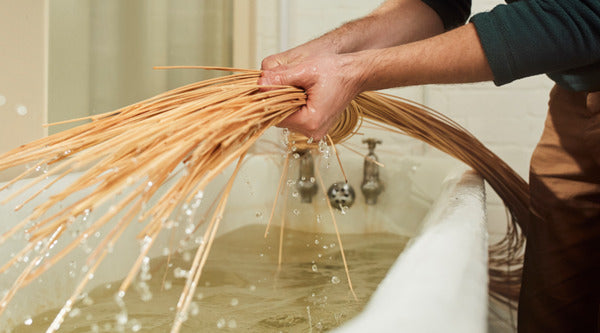
Let’s soak the new rattan for 30 minutes to 1 hour until it stretches
Then, let’s soak the new rattan for 30 minutes to 1 hour until it stretches sufficiently to be handled. When it gets soft and bendy, it's time to drain it from the water.
The next step in repairing rattan furniture is to glue loose strands back into their original condition. To do this, you need to apply a tiny amount of glue to the damaged rattan and slowly put it back into its former position. Then, you should keep the strands tightly attached for several minutes to enable the glue to entirely dry.
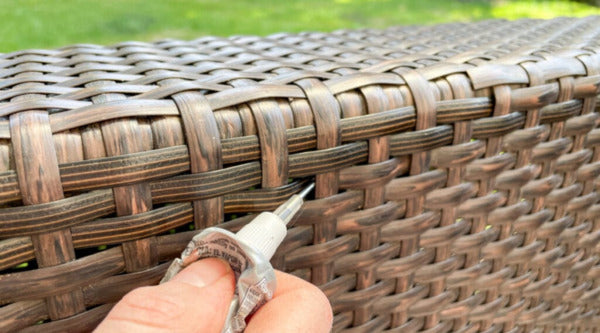
You need to apply a tiny amount of glue to the damaged rattan
To continue this DIY repair of rattan furniture, you should use a couple of pliers to carefully weave the new rattan strands. If necessary, you can use toothbrushes or similar small instruments to help push the newly formed strands into tight areas. This stage demands accuracy as well as attention to every detail to guarantee that the new weave matches the old as closely as possible.
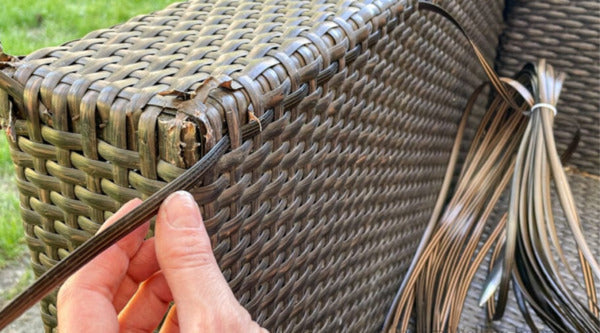
To continue, you weave pieces into the existing ones
After weaving in the newly added rattan pieces, let's cut off any extra material. Then, you should trim new strands to exactly match the measurement of the current weave with scissors. To ensure a clean and neat finish, you have to trim the surplus material at a right angle.
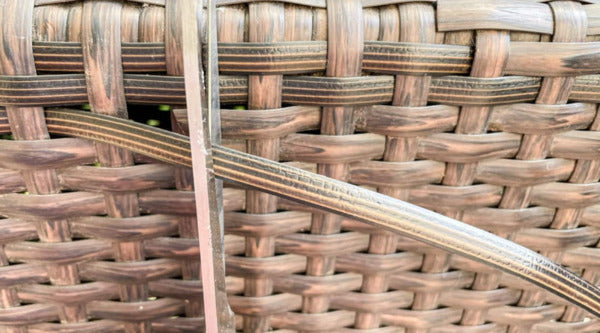
After weaving in the newly added rattan pieces, let's cut off any extra material
After removing the surplus material, you have to insert the final ends of the substitute strands. This step plays an important role because it assists in helping to keep the new strands firmly attached and prevents them from departing loose in the future.
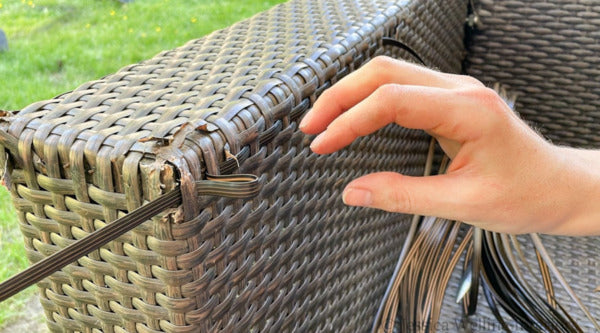
After removing the surplus material, you have to insert the final ends
The final step to repairing rattan furniture is waiting for the glue to dry out entirely. This is a significant step because it guarantees the new weave is strong and will not break apart when being used.
Hence, you need to wait at least 24 hours before utilizing the furniture again. Therefore, let's take a moment to relax, have a cup of tea, and wait for the glue to dry.
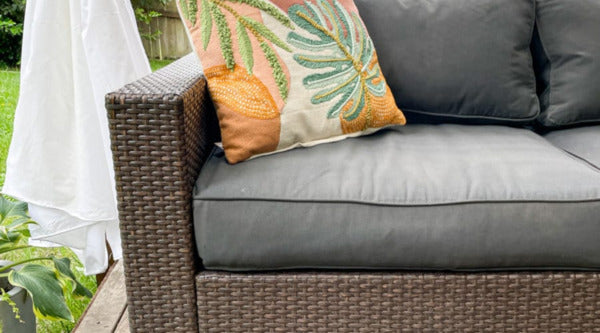
The final step to repairing rattan furniture is waiting for the glue to dry out
If your product has scratches and marks, can you get rattan furniture repaired? There are many simple ways to mend your rattan item. Check it right now.
Cleaning your rattan furniture regularly is a crucial action you should remember when attempting to repair blemishes on it.
Dust, filth, and even hair from pets can gather in your piece of furniture. So, you should clean the item to prevent dirt from being pushed deeper into the fibers.
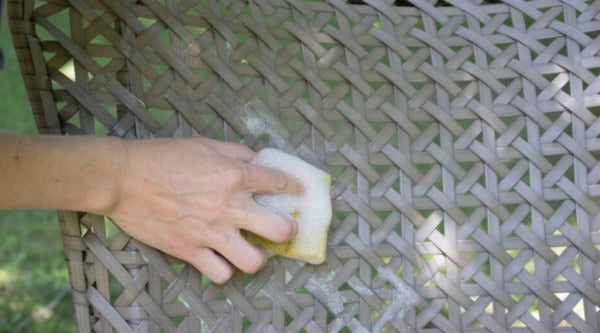
Cleaning your rattan furniture regularly is a crucial action
You need to carefully clean the surface around the scrape with a soft towel, soap, and water to get rid of any dirt or color change. This will help return your rattan furniture to its original appearance. Hence, it can last for many years and be easy to maintain.
Create a cozy retreat. Find the lighting that makes your house a home.
Free delivery between Dec 3 - 4 on orders $200+
45-Day Return
The hair dryer is a helpful item that may be utilized with the repair procedure. You just need to warm up the rattan with a hairdryer and soften the weaves. This process will make it easier to pull the strands back into the right place.
Moreover, this is particularly beneficial if you need to weave in their natural state strands to substitute the damaged ones.
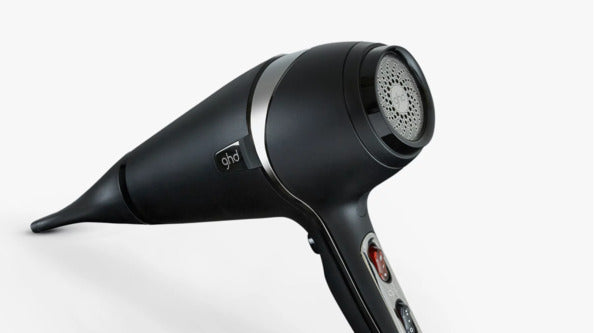
The hair dryer is a helpful item that may be utilized with the repair procedure
The following step is to apply an outstanding finish to the surfaces of the furniture. One method is utilizing sandpaper to polish the rattan's appearance. This will help to smooth down any rough spots and provide a nice finish for your product.
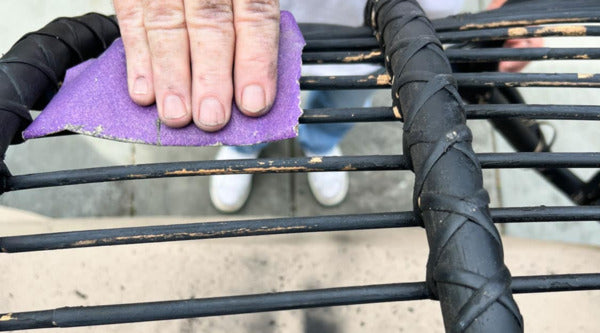
One method is utilizing sandpaper to polish the rattan's appearance
After scrubbing, you may choose to apply an additional layer of varnish to add additional safety and shimmer. Varnish can help preserve the fibers of rattan against accidental scratches. Moreover, it can also provide your furniture with a lovely, shiny appearance.
How do you repair rattan furniture in your home, such as wobbly chair legs? Let’s try these tips to make it newer and be able to use it for a long period of time.
Cracks in the legs cause instability and shaking. As a result, mending cracks in your furniture legs may be the key to securing your wobbly items.
Let's begin by removing any dirt or debris from the broken place by using a soft cloth. Then, you should apply the wood filler to the crack with a toothpick.
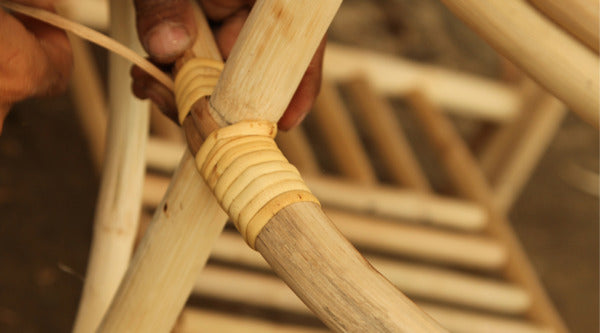
You should be certain that it completely covers the crack
You should be certain that it completely covers the crack and smooths away any surplus filler. Then, allow the filler to dry entirely before polishing the surface with sandpaper.
When the surface is smooth, it's possible to apply varnish or paint the leg to coordinate with the other parts of the furniture.
It is easy to DIY repair rattan furniture, such as broken strands in the legs. Broken strands can weaken the framework and make the legs wobbly. To repair this, you first need to identify the detached strands and snip them away with scissors.
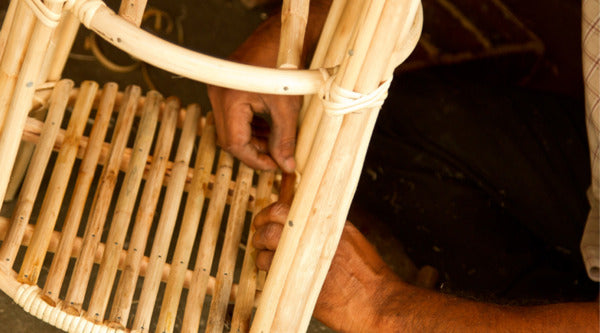
It is easy to DIY repair rattan furniture, such as broken strands in the legs
Then, you dip an additional piece of rattan in warm water for at least 30 minutes before weaving it into the current strands with the help of pliers and toothpicks.
After that, you have to insert and attach the final ends of the substitute strands under the remainder. Finally, you can use them again after waiting for the glue to dry.
A rattan chair may also be highly unattractive and uncomfortable after a long time of use. To help you repair them effectively, Rowabi will suggest some steps that you can take to fix them. Check it out!
Moisture can help in the rattan fibers' expansion and tightening, which might play a role in regaining the form and stiffness of the seat.
You just need to use the warm water to clean the seats and make sure to get into all the nooks and crannies. Next, let's allow the seats to completely dry.
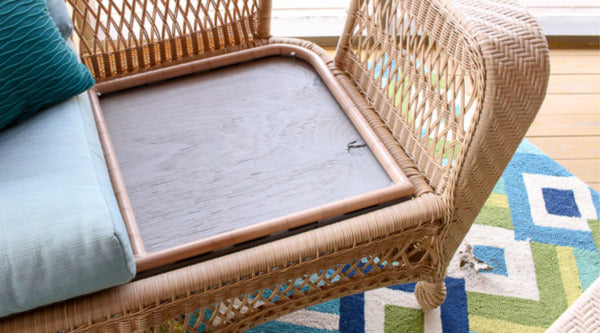
It's crucial to avoid using excessive amounts of water
However, it's crucial to avoid using excessive amounts of water because it might warp or discolor the rattan.
Even though it may seem strange at first, spray plants to repair rattan furniture and keep it from sagging. The rattan fibers are hydrated and expanded by the misting process, which can help them regaining some of their natural flexibility.
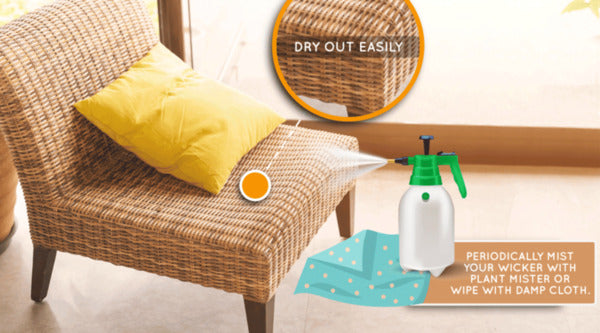
The rattan fibers are hydrated and expanded by the misting process
To do this, you have to gently spritz the damaged area with warm water from a plant mister till it is fairly wet. The rattan fibers should be carefully pushed and twisted back into position using your hands. This can assist in halting the drooping and restoring the seat's contour.
Cushions are a good idea to keep the furniture from sagging further and make it more comfortable. It's crucial to decide on cushions that are the right size for your items and constructed of durable materials.

Cushions are a good idea to keep the furniture from sagging further
Cushions with detachable covers can also help with maintenance and cleaning in the long term. Furthermore, with so many various colors and textures to choose from, you may personalize your cushions to meet your style and add a unique element to your living space.
If you want to repair your rattan furniture successfully, you need to prepare full material and learn how to do it from a selection of sources. Let’s note down some notes below to mend your items.
Firstly, you have to determine the extent of the damage to your rattan furniture. This will help you determine which replacement and fixing procedures are required. At the same time, identifying the damage also helps you understand the current condition of the interior.
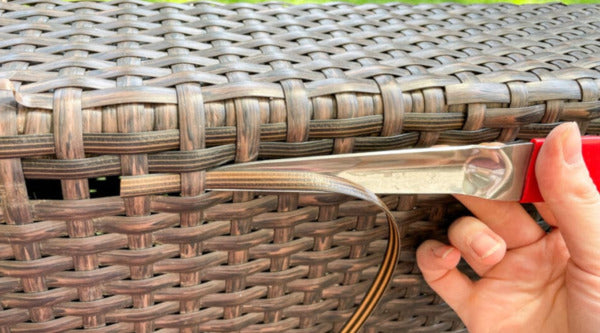
You have to determine the extent of the damage to your rattan furniture
You will select several materials based on the damage that has occurred and the intended repair. Moreover, you must carefully analyze your options in order to select the proper material because every scratch often has its own repair principle.

You will select several materials based on the damage that has occurred
When choosing an alternative weave to replace your rattan furniture, let's take into account the material's color and shape. Consider how your interior would lose its attractiveness if it were in a different place than the other places.
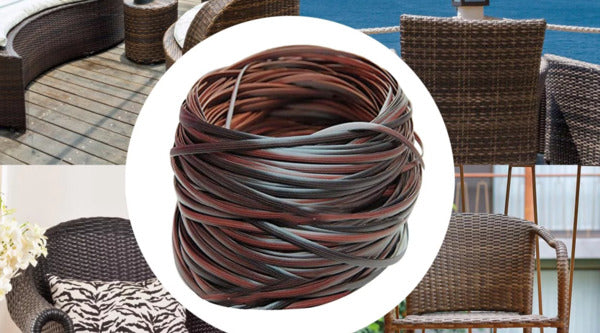
Let's take into account the material's color and shape
One of the most significant elements determining the durability and stickiness of rattan furniture after maintenance is glue. You should use an effective, strong adhesive so that the new rattan fiber can not be damaged again and injure the person sitting on it.

You should use a good adhesive to rattan fiber can not be damaged
Here are some suggestions for repairing damaged furniture. However, if the damage is extensive, you should consider replacing the items with higher-quality ones. This is because it not only directly affects the appearance of your home but also the quality of life within it.
For example, an uncomfortable chair or a malfunctioning lamp cannot fulfill their intended functions properly. Therefore, choose a reputable source to purchase durable and high-quality furniture. If you are looking for a rattan pendant light that suits your preferences and budget, you can explore our collection rattan furniture.
Repairing rattan pendant lights involves fixing any damages, while refinishing is a method to renew the appearance of rattan furniture. Each piece of furniture can be refinished differently to achieve a fresh, glossy look. Here are step by step instruction of how you can refinish them beautifully:
You've learned how to repair rattan furniture to restore its functionality and how to refinish it for a more appealing appearance. But what about maintaining that look, especially for rattan garden furniture exposed to direct sunlight? Let's find out:
Is it possible to repair rattan furniture?
Is it worth repairing rattan furniture?
What is the best glue for repairing rattan furniture?
How do you fix sagging rattan furniture?
Why is my rattan furniture splitting?
Why has my rattan furniture split?
Why is rattan so expensive now?
Can Gorilla glue be used on furniture?
What kind of glue to repair wicker?
What do you coat rattan furniture with?
This article has shown you many tips to repair rattan furniture in various ways. They are easy to do and require simple materials and skills for replacing your item.
Rowabi hopes that you can apply these methods to make your furniture look like new and save money by not buying other furniture.

How to Clean Wicker Furniture Indoor & Outdoor: Quick and Easy Methods
Taking care of your wicker furniture, whether it's inside or out, is key to keeping it looking good and lasting longer. But let's face it, not everyone knows the best ways to clean it quickly and e...
Read more
Rattan Bedroom Furniture: Benefits and 15+ Stunning Ideas
Rowabi lighting is bringing you 15+ stunning rattan bedroom furniture ideas that will inspire you to transform your bedroom into a serene and stylish haven. With the rapid rise of natural elements ...
Read moreGifting has never been easier
Perfect if you're short on time or are unable to deliver your gift yourself. Enter your message and select when to send it.


2 comments
Hi Maureen,
Thank you so much for your kind words about our rattan insights. We’re so glad you enjoyed them! Regarding your daybed, rattan pieces often have hidden or tightly secured screws that can be tricky to remove. We recommend using a penetrating oil (like WD-40) and letting it sit for a few minutes before trying again with a manual screwdriver for better control. Avoid forcing the screws to prevent cracking the rattan frame.
Wishing you the best with your refinishing project. Sounds like a beautiful idea for winter!
Warm regards,
The Rowabi Team
The Rowabi Team
Loved reading all your info on rattan. I have a problem. I purchased a 10 day bed, it won’t fit in my house. So I decided to take it apart, refinish it and then bring it inside
I can’t seem to get the screws out of the side panels of the bed. Any suggestions on how to take apart of a tan piece of furniture and desperate winter is close
Thanks again for your help
Maureen.
Maureen Agius
Leave a comment
This site is protected by hCaptcha and the hCaptcha Privacy Policy and Terms of Service apply.